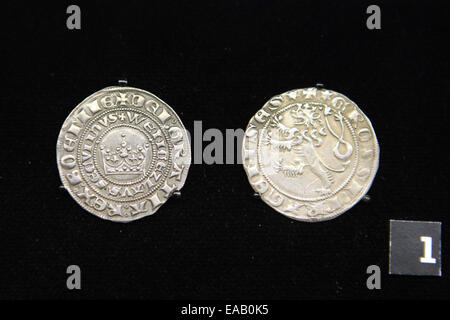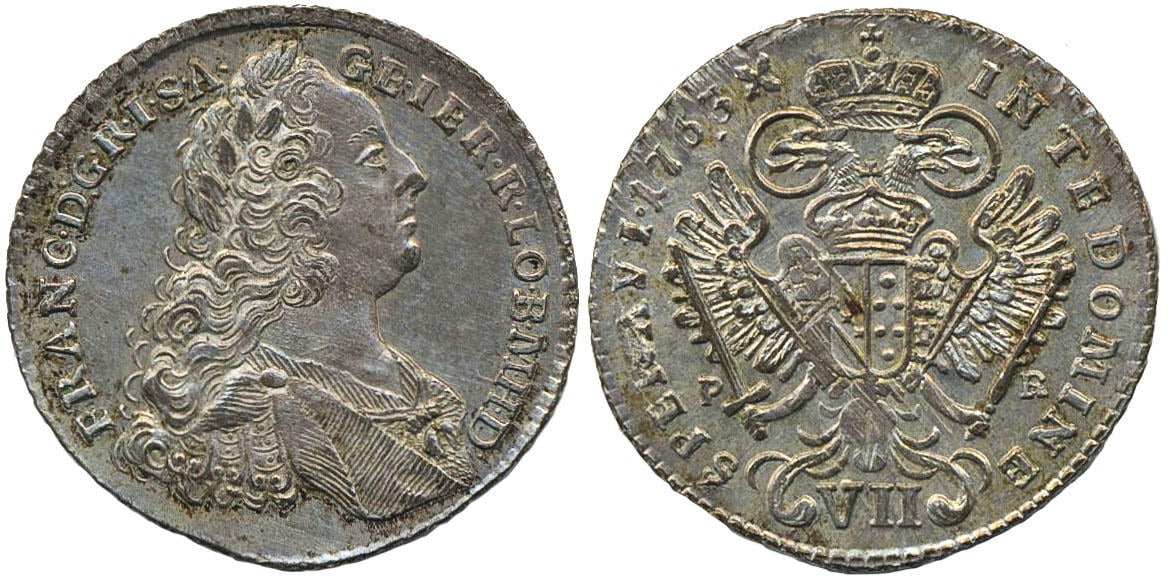Excellent Ideas On Drawing Prague Mint Coins
Wiki Article
How Can You Make A Plaster Cast To Represent The Gold Coin Or Medal?
Making a mold of plaster or "maquette" inspired by the gold medal or coin design requires a series of steps to translate the two-dimensional design into a 3D physical representation. The initial Design Reference- The artist or designer uses the design of the gold coin or medal to serve as a reference. This design may be a simple sketch drawn by hand, or it could be a digital image that is created using graphic software. Other materials, like clay or wax, could be used.
Preparation of Plaster- Plaster is mixed with water to make an able consistency. The mixture must be smooth and free of lumps to create an effective mold.
Make the base- The maquette is sculpted on an appropriate base or platform. The base can be a wood board or a flat surface that provides stability.
The sculpting process involves shaping the Maquetteusing the gold design as a reference, the artist begins sculpting the design into the clay. The plaster is then shaped to form the relief or three-dimensional image of the coin or medal.
Detailing and Refinement - The artist adds details that refine the contours of the image and makes sure that the proportions are accurate and design elements. This stage involves precision and meticulous attention to the specifics.
Allowing for Drying and SettingAfter the sculpting process is done, the sculpted has to be allowed to set and dry. This allows the maquette's shape to be retained and its hardening.
The Maquette is finished - after drying out, the maquette will be further smoothed to eliminate any bumps or rough spots.
Preservation and Sealing- To protect the maquette for use in the future, such as scanning or molding it may be coated with the sealant.
The final model of the maquette is the gold coin or medal design in three-dimensional format. It can be used as a guideline for subsequent stages of production such as digital reproduction, mold making for mass production or for artists to work on and refine the design prior to final production. View the best Czechoslovakia gold coins plaster molds more recommendations. including $50 gold coin, 1oz gold, 2000 sacagawea, 2000 p gold dollar, double eagle coin, 1 oz gold coin price today, price for one ounce of gold, gold coin gold, gold apmex price, cost of 1 oz of gold and more.
Why Do Dies Used For Striking Gold Medals Or Coins Undergo Vacuum Hardening Processes?
The process of vacuum hardening used for dies in striking gold medals or coins involves making the dies subject to high temperatures and controlled environments within a furnace that is a vacuum. This is a brief description of the process of vacuum hardening.
When creating dies to be used in striking metals or coins, it is crucial that they are clean of contamination or residues.
Moving into Vacuum Furnace-
Die dies are placed in an environment chamber that is vacuum.
Evacuation of Air
The vacuum oven removes all air from the chamber creating an environment free of oxygen as well as other gases. This guarantees uniform heating and prevents the oxidation process from occurring.
Heating Phase
The furnace then gets heated up to the temperature required for the hardening of dies. The temperature range varies based on the material and hardening processes.
Soaking in high temperatures
The dies must be held at the high temperature for a specific period of time in order for the material to reach and maintain its desired hardness.
Quenching or Cooling
After the soaking process, dies need to be quickly cooled using specialized techniques. The rapid cooling process can help keep the desired toughness and durability of the metal.
Tempering (Optional).
In some situations the process of tempering may follow the process of hardening. Tempering involves reheating dies at a low temperature to ease internal tensions and increase the toughness.
Quality Control and Inspection
Die dies are subjected to rigorous quality tests and inspections to confirm that they meet the required toughness, hardness, and dimensional tolerances.
Post-Treatment Handling-
After the process of vacuum hardening is finished The dies can undergo further processes like polishing or coating before being employed in the coin or medal striking process.
The vacuum hardening procedure enhances the durability, wear resistance and lifetime of the dies used to create gold medals or coins. By creating a controlled environment free of airborne contaminants the process ensures the consistent and reliable hardening of dies, which improves the quality and longevity of the minted products. See the top rated vacuum hardening Czechoslovakia gold medals more examples including five dollar gold piece, american eagle gold coin 1 oz, 1 10 american gold eagle, gold coin store near me, silver double eagle coin, american gold eagle 1 oz, 1 10 ounce gold coin, gold doubloons, gold eagle coin, gold piece price and more.

What Is The Process By Which High-Quality Gold Blanks Get Weighed, Assessed And Ready For Minting Process?
To ensure consistent and accurate gold coins or awards, high-quality blanks must be carefully prepared prior to the process of minting. Preparation Process: Gold Material Select- For the production of blanks it is necessary to select a high-purity metal. The gold is typically refined until it meets the required purity standard for coinage.
Gold Blank Production: Gold is transformed into blanks by a process known as blanking or blank cutting. Blanking involves cutting coin-sized disks or planchets of gold using special equipment or stamping processes.
The exact measurement and weighting of the items.
Weighing - Each of the blanks is weighed individually to ensure it is in line with the weight requirements for the coin or the medal. This ensures that every piece has exactly the amount of gold required for the desired denomination.
Measuring - To ensure uniformity to ensure that the diameter, thickness, overall dimensions, and design specifications are adhered to every blank is measured using precise instruments.
Inspection and quality control
Visual Inspection: Each Blank is examined visually in order to identify surface imperfections.
Rejecting blanks that aren't in conformity To ensure consistency and uniformity Blanks that don't meet the weight, dimension, or quality requirements are rejected.
Why should you prepare?
Consistency throughout the Minting Process A precise measurement and weighted blanks will guarantee uniformity. Consistency in weight and dimension leads to uniform striking, producing coins or medals of the same quality and worth.
Accurate Gold Content: Each blank is weighed precisely to ensure that the final coin or medal contains the exact amount of gold needed. This ensures accuracy in terms of value and purity.
Uniform Blanks - Avoid variations of weight or size which may impact on the value of the coin or medal and legality, or its suitability for circulation or for commerce.
Quality Assurance - Strict measures of quality control during the blank preparation process ensure that only the highest quality, defect-free, blanks are taken to the minting stage which reduces the chance of flaws appearing on the finished product.
Legal Compliance - It is important that coins for purpose of circulation or commemoration adhere to specifications and conform to the legal specifications.
The precision and consistency in preparing high-quality gold blanks are vital aspects of the minting process. They ensure the production of precise and high-value legal acceptable gold medals or coins. Take a look at the most popular gold blanks for Czechoslovakia gold coins site examples including silver double eagle, silver nickel, george washington gold dollar coin, price of 5 dollar gold coin, 1 ounce gold bullion, spanish gold coins, 2000 gold dollar, gold medal gymnasts, 2000 sacagawea, krugerrand gold coin and more.

How And Why Are Limited Edition Gold Coins Or Collectible Gold Coins Numbered Individually?
This is done to guarantee authenticity, exclusivity and increase the appeal of collectible or limited edition gold coins. How and why is this process carried out?
Sequential Numbering- Every coin from the limited edition or collectible series is assigned an unique number. The number is typically engraved or stamped onto the coin's surface or edge. The number indicates the place where the coin is in the collection.
Certificate of Authenticity- The coin might come with a certificate of authenticity that matches the coin's unique number. This certifies the authenticity of the coin. It contains information on the series, its metal content and minting.
The reasons for individually naming coins
Authenticity Assurance – The numbering of every coin in the series is an easily identifiable and verified method to verify the authenticity of the coin. Each number functions as an individual identifier that ensures that the coin is genuine.
Exclusivity and RarityCoins with limited editions and distinct numbers are thought of as more exclusive and rare. Collectors typically seek out numbers for their coins due to their limited availability, contributing to their desirability and value.
Numerous coins are collectible and allow collectors the ability to show specific numbers. Lower or significant sequence numbers may be deemed as more valuable.
Individual Numbering encourages Collector Engagement and Interest in Completing Sets or acquiring Specific Numbers. Collectors might be motivated to seek specific numbers due to their personal preferences or because they have reached an important achievement.
Value and Resale Potential- Coins that have unique numbers could have a higher value on the market for secondary sales, particularly if they have lower serial numbers or belong to an established series. They can be valued due to their rarity or distinctiveness by collectors.
Numbering and Trackability assists in tracking and documenting the background of each coin, which assists in provenance and confirmation of the collector's market.
By numbering collectible or limited edition gold coins, mints, or their issuers, establish authenticity, create exclusivity and increase the value of these coins for collectors seeking unique or important items. Numismatics often attach special importance and importance to these numbered gold coins. See the most popular Prague Mint gold coin numbering more recommendations including old silver coin, gold doubloons, gold medals, cost of silver coin, gold panda coin, krugerrand gold coin, gold dollar, 24 karat gold coin, $50 gold coin, gold bullion for sale and more.

